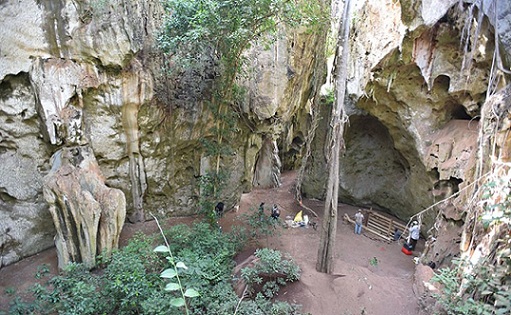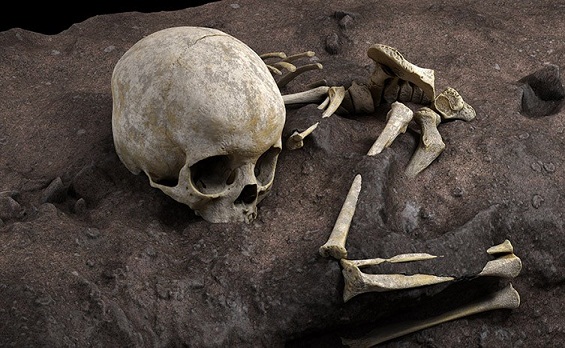The discovery of the burial of a small child in a cave in Kenya is providing new insights into the development of funerary practices of modern humans. Dating to roughly 78,000 years old, the grave is the oldest human burial discovered in Africa to date.
Dating to roughly 78,000 years old, the grave is the oldest human burial discovered in Africa to date.
Now, an international group of researchers has used advanced scientific techniques to peer into the past, revealing for the first time details of the ancient interment — finding that it is the oldest deliberate burial of a Homo sapiens individual in Africa. Older Homo sapiens burials have been found in Europe and the Middle East, some dating to about 120,000 years ago.
A lot of these aspects, such as language and belief systems, leave little to no archaeological evidence. But the treatment of the dead does leave some tantalising clues as to the behaviours of our early ancestors.
The ancient burial of a child who was about three years old when died, has been found in a coastal cave in Kenya. The individual was buried in a purposely dug hole and the body was placed with legs drawn up to the chest. It is also thought that the child’s head seems to have been delicately placed on a rest or cushion, which no longer survives. The scientists have named the remains “Mtoto,” which is Swahili for “child.”
This is some of the earliest evidence that we have in Africa about humans living in the physical and also in the symbolic world.”
In 2017, after the grave was excavated from the Panga ya Saidi cave north of Mombasa, archaeologist Emmanuel Ndiema of the National Museums of Kenya carried it inside a block of sediment on a flight from Nairobi to Jena in Germany. From there, Martinón-Torres took it with her during a flight to Burgos. Martinón-Torres is the director of the National Center for Research on Human Evolution (CENIAH) in Burgos in Spain.
Petraglia, one of the authors of a study about the find, said that the 40,000-year gap between the oldest-known Homo sapiens burials and Mtoto’s burial probably reflected the fact that paleolithic archaeology was relatively recent in Africa compared to Europe and Asia, although Africa is the original home of our species and could have burials that are even older.
Fakes from ancient stone flakes and other evidence show that Panga ya Saidi cave was also used as a temporary residence by groups of Homo sapiens hunter-gatherers, and Neanderthal and Homo sapiens graves have also been found at similar “residential” sites in Eurasia, he said.
The researchers also found that a pit surrounding the child’s body had been dug deliberately, showing that it was a true burial and not mere “funerary caching” of a dead body in an available niche, which is seen at some other ancient sites, Petraglia said.
Mtoto appeared to have been laid to rest with much care.
The body was shrouded in some perishable material, perhaps woven cloth; and the child’s head was distinctively tilted, which suggests that it was placed on a head rest of some sort that had since rotted away.
Mtoto was buried lying on their side, in a “flexed” position that was common in many ancient human societies, and which may have been seen as a natural way to place the dead, Martinón-Torres said during an online presentation this week.
Nicole Boivin, the director of archaeology at the Max Planck Institute in Jena, has worked at the Panga ya Saidi cave for about 10 years.
Archaeologist Ndiema said that the Panga ya Saidi cave was considered a sacred place by some Kenyans today, as it probably was during the Stone Age.
“It still has a very strong cultural and spiritual connection with the local people. … They still use this place for rituals of worship and to seek healing,” he said.

